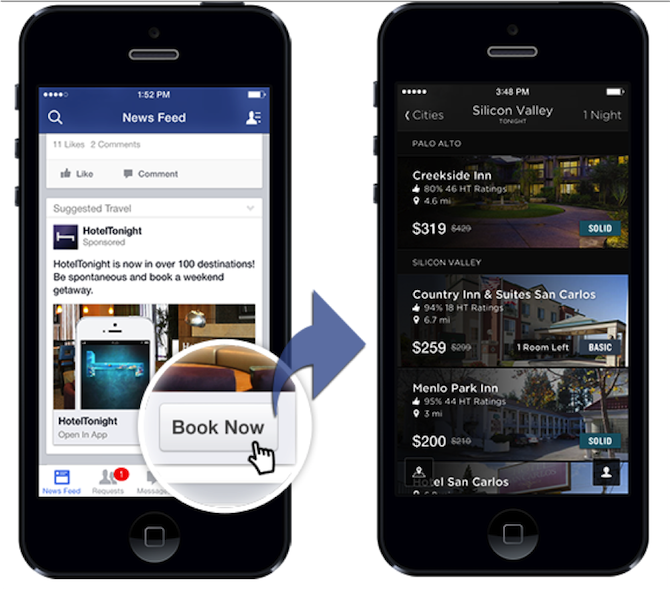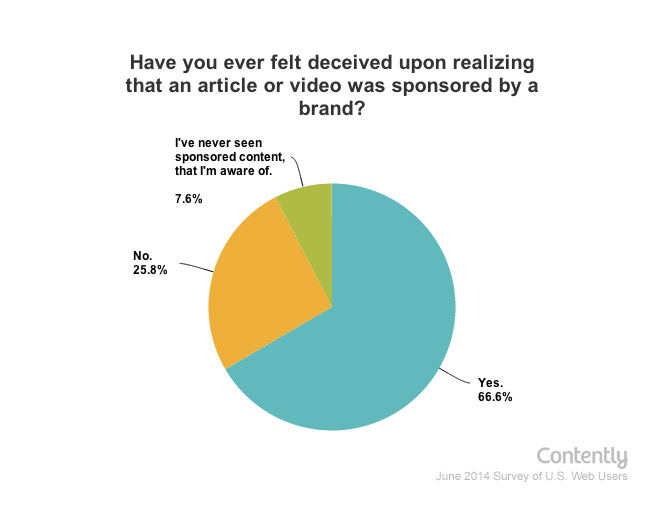Viewers of John Oliver’s HBO comedy news show Last Week Tonight were treated to a scathing, eleven minute segment wherein the popular Daily Show alumnus went about eviscerating the journalistic integrity of publications that choose to employ in-feed native advertising. For the purposes of his segment, Oliver defined native advertising–a term that still lacks a universally agreed-upon definition in the advertising world–as sponsored content that appears within news feeds, seemingly designed to dupe consumers into believing they are reading objective editorial content.
“I like to think of news and advertising as the separation of guacamole and Twizzlers,” Oliver joked. “Seperately, they’re good–but if you mix them together, somehow you make both of them really gross.”
In addition to a number of new mobile ad formats, native advertising has become an increasingly mainstream practice amongst digital publications hoping to better monetize available ad space. Facebook reported native advertising as delivering 49x the click-through rate of standard display ads, and Yahoo plans to do away with non-native advertising space entirely by the end of 2014.

Native Advertising blends in seamlessly with the publisher’s site or app
Related: 9 Native Advertising Best Practices
Native Advertising – Deliberately Misleading?
Oliver’s primary targets were respected news publications that he felt were compromising their ethics in a desperate attempt to turn a profit. Specifically, he singled out Time CEO Joe Ripp for creating a dedicated team tasked with producing native advertising content for his publications. “As long as it’s clearly marked; as long as the consumer knows the difference between what’s editorial and what’s native, I don’t see any problem at all,” argued Ripp.
The IAB (Internet Advertising Bureau) 2013 Native Advertising Playbook includes a section on the standards for proper disclosure in Native Advertising, providing overarching principles to ensure that consumers will be able to distinguish between what is paid advertising vs. what is editorial content. Proper disclosure is considered the foundational justification for native advertising as a transparent and non-damaging presence in news publications.
But Oliver disagreed: “It IS a problem, because consumers cannot tell the difference.”
He cited a recently released article from the IAB that reports the majority of general news consumers (59%) cannot identify native advertising in a news feed.
“It’s SUPPOSED to blend in,” said Oliver. “You’re like a camouflage manufacturer saying ‘Only an idiot could not tell the difference between that man and foliage. The camouflage clearly states, ‘NOT FOLIAGE’ on the collar.’”
Dangers of Native Advertising
The issue of native advertising “duping the consumer” is nothing new, though the majority of publishers and advertisers choose to ignore the risk, according to Hexagram’s “State of Native Advertising 2014” report. 4 out of 5 publishers, and 2 out of 3 brand advertisers that use Native Advertising, believe they have received no backlash at all to their campaigns.
But the numbers tell a different story. While the click-through rate of native ads is astronomically higher than click through for display ads, consumer action post-click is actually much worse–16% worse, in the case of Facebook. And, according to Contently’s recent study “Sponsored Content Has A Trust Problem,” two thirds of consumers have felt deceived by native advertising–with 58% definitively stating they would prefer to be served banner ads.

Two Thirds of consumers report feeling deceived by native advertising (image courtesy of Contently)
When asked if they felt a news site that features in-feed Native Advertising loses credibility, 58% said yes.
This is a serious issue for mobile app publishers, in particular, who already face a ruthlessly competitive ecosystem (on average, consumers open a given app only 1.8 times). Not only will continued negative consumer experiences inevitably lead to diminishing returns for ALL Native Advertising formats–frustration caused by misleading ads could very well trigger instant uninstalls.
The solution? Publishers need to be more careful about what native content they allow, and in what context. At the same time, advertisers must adjust their native advertising to provide actual value to the consumer–not just a sales pitch.
Dan Greenberg, CEO of Sharethrough, told Businessweek: “What’s actually happening here is that the business side of the world has realized that, to survive in the long run, they need to create quality, authentic, real content,” he says. “In some ways, you could say that state has found its religion.”
Oliver offers an alternate suggestion:
“Every time a corporation is allowed to sneak advertising into our news and ruin it, our news should be allowed to sneak into their advertising.”
The segment ended with a shirtless male model drinking Diet Coke while talking about the West African Ebola epidemic.

